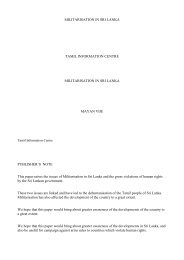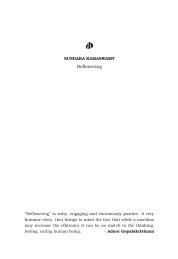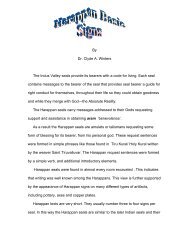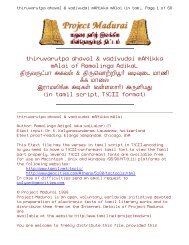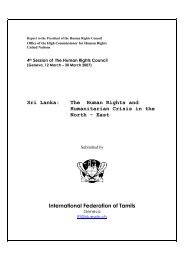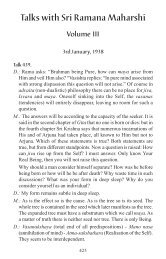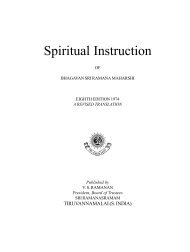Asymmetric Warfare And Low Intensity Maritime Operations
Asymmetric Warfare And Low Intensity Maritime Operations
Asymmetric Warfare And Low Intensity Maritime Operations
- No tags were found...
You also want an ePaper? Increase the reach of your titles
YUMPU automatically turns print PDFs into web optimized ePapers that Google loves.
<strong>Asymmetric</strong> <strong>Warfare</strong> <strong>And</strong> <strong>Low</strong><strong>Intensity</strong> <strong>Maritime</strong> <strong>Operations</strong>:Challenges For Indian NavyThis paper examines the concept of asymmetric warfare and <strong>Low</strong> <strong>Intensity</strong> <strong>Maritime</strong><strong>Operations</strong> (LIMO). It identifies the actors as also the changing nature of their tactics.The paper argues for restructuring of naval forces as response and deterrence to asymmetricand LIMO actors that the Indian Navy will encounter in the coming years.THE CONCEPT<strong>Asymmetric</strong> <strong>Warfare</strong>© 2006 Observer Research Foundation. All rights reserved. No part of this publication may bereproduced or transmitted in any form or by any means without permission in writing from ORF.The Chinese can be credited with the evolution of the concept of asymmetric warfare.Sun Tzu, the ancient Chinese strategist, described the concept as one that, “refrainsfrom intercepting an enemy whose banners are in perfect order, refrains from attackingan army drawn up in a calm and confident array.” Another of his military maxims is,“to fight and conquer in all your battles is not supreme excellence; supreme excellenceconsists in breaking the enemy’s resistance without fighting”. The basic theme of thisstrategy is that an enemy should be attacked at its point of vulnerability and not whereit is the strongest. 1The concept of asymmetric warfare became popular among security specialists duringthe Cold War. The US successfully pursued asymmetric advantage over the SovietUnion by choosing not to match “tank for a tank” or “missile for a missile”. Instead itchose to use helicopters to counter tanks and developed the Strategic Defence Initiativeto counter the large arsenal of ICBMs. 2 Today, however, US strategists working on“Revolution in Military Affairs” (RMA) have further refined the concept. The conceptis now built on the premise that the US has an overwhelming technological superiorityover the conventional military forces of virtually any conceivable adversary but remainsvulnerable to certain types of unconventional response: terrorist attacks, weapons ofwww.orfonline.org4



